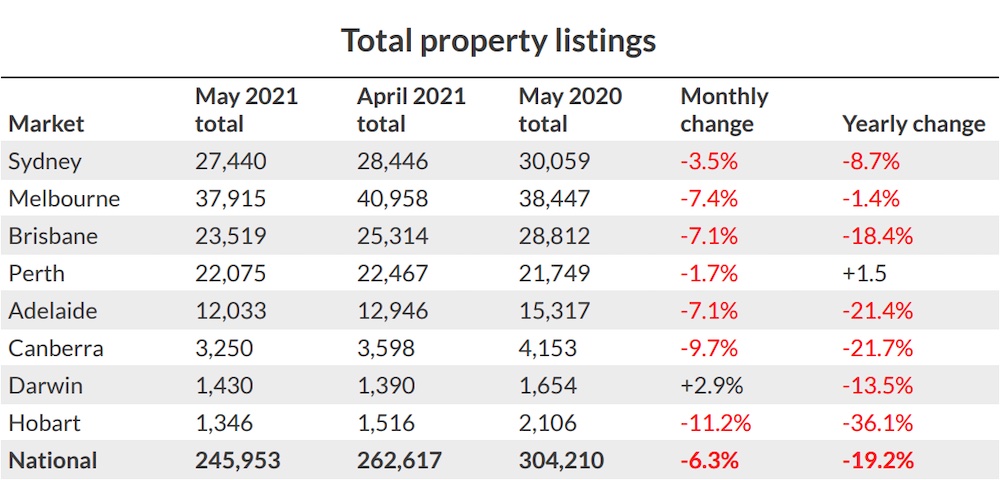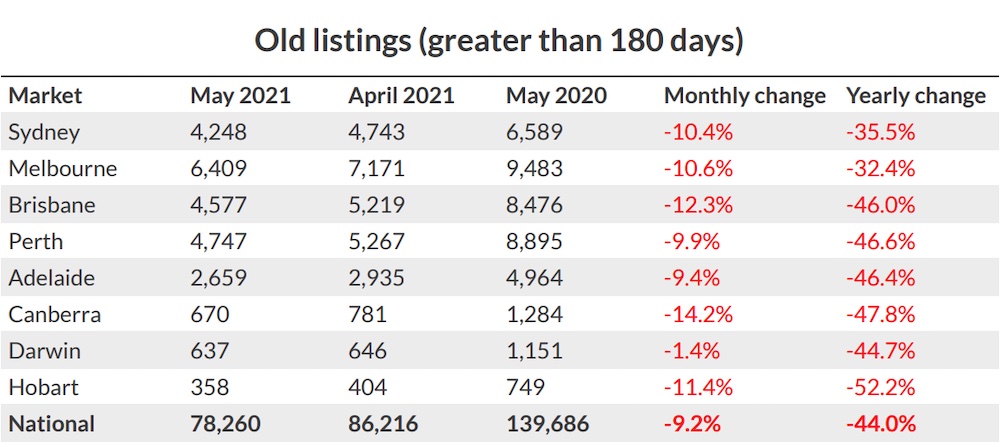New listings are slowing - what does that mean for the market?
This year there's been one factor that's driven the current Australian property boom as much as any other: an imbalance between supply and demand.
Low levels of total stock on the market have been topped up to a small degree by new sellers listing their homes, but not at a fast enough rate to satisfy frenzied buyer demand which has seen properties being snapped up faster and faster.
Now we've entered winter, typically a quieter time for the market, and new listings are winding back, meaning there may be even more competitive pressure put onto buyers.
So how might this affect property prices and does it present an opportunity for sellers?
New and old listings both fell in May
According to the latest figures from SQM Research, total residential property listings around Australia dropped by -6.3 per cent in May to 245,953, down from 262,617 in April.

That includes a -2.4 per cent dip in new listings for the month which saw a wide spread of stock changes across the capitals.

New stock in Hobart plummeted and Canberra, Melbourne and Adelaide also saw significant drops, while things held more steady in Brisbane and Sydney, and Perth and Darwin even saw upticks from April.
But while new listings were up substantially from last year, when the brakes were slammed on the property market at the height of the pandemic, perhaps the most telling numbers came from the change in old listings.

Properties listed for more than 180 days saw a very sizeable -9.2 per cent drop in May, and a staggering -44 per cent annual plunge, indicating buyers are casting a wider net and homes that may have previously been a harder sell are now gaining more interest.
"The downward trend in old listings suggests strong absorption rates," says SQM Research Managing Director Louis Christopher.
"So new property listings are not completely offsetting the falls in old listings, indicating there are more buyers than sellers in the market, which is fuelling the property boom."
Mr Christopher points out that regional areas like the NSW Mid North Coast, the Gold Coast and the Murray Region have also seen substantial falls in listings and, as a result, rapid gains in property values.
It's all contributing to the surge we've seen across the country this year, with the median dwelling price in Australia rocketing up +10.1 per cent since the start of 2021 according to CoreLogic figures.
Will listings continue to dry up in winter?
Traditionally the colder months mean less stock on the market, as potential vendors wait for the blooming flowers and chirping birds of spring.
In a recent analysis penned by My Housing Market's Chief Economist Dr Andrew Wilson, he says "the number of newly listed homes for sale has predictably fallen over recent weeks as seller interest declines with the onset of the typically quieter winter selling season."
In REA Group's Housing Market Indicators Report for June, author and Executive Director of Economic Research Cameron Kusher notes "as we head into winter, the volume of properties listed for sale may start to decline.
"Even with search volumes down, a softening in supply may help to sustain above-average views per listing."
Dan White, Ray White Group's managing director, has different expectations.
"There's nothing we’re seeing that would make us think listing numbers will drop during winter at all," he told the Australian Financial Review.
"There’s no reason for people to have a traditional wait over winter because the depth of the buyer market remains so strong."
Ultimately it may depend on seller sentiment and whether or not people are willing to make the early move or if they would prefer to wait until spring to list.
What would fewer listings mean for sellers?
If supply continues to dwindle and buyers' appetites remain strong, it should mean values continue to rise, but the colder months can be difficult to predict.
The question is, will buyer demand ease off in step with a lower listing rate as we move through winter?
Two top agents, Max Klimenko of Sydney's Ray White Touma Group and Tristan Tomasino of Biggin & Scott Yarraville in Melbourne, say winter can be a great opportunity for sellers.
"Buyers aren't seasonal," says Mr Klimenko. "I love selling in the winter market because there's less [seller] competition, you're more in isolation."
Mr Tomasino agrees, saying winter is "one of, if not the best, time of year to sell, because there's not a lot for sale.
"There will be buyers regardless of whether we're going into winter or not."
Home values continue to rise every month, clearance rates remain high, indicating that buyers are still out in force, and the Reserve Bank of Australia is holding firm on its message that interest rates aren't likely to rise until at least 2024.
Considering all of those factors, it's looking like it could be a bustling winter season for vendors.







